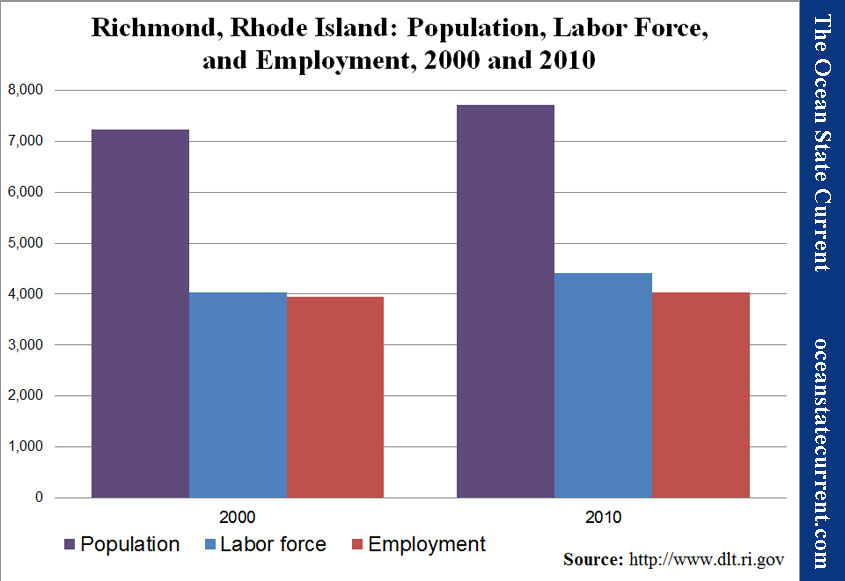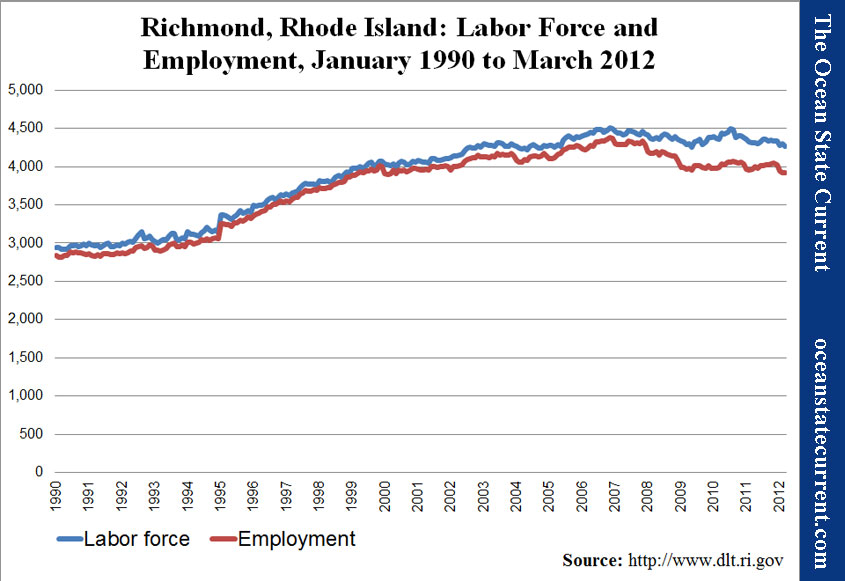State in Decline, Employment in RI Cities and Towns: Richmond
At 8.1%, Richmond’s not-seasonally-adjusted unemployment rate is second only to Barrington’s. Historical trends for the less-wealthy Southern RI town, however, are healthier.
Between the U.S. Census surveys done in 2000 and 2010, Richmond’s population grew 6.7%. Its labor force expanded by 9.4%, and the number of employed residents of the town increased 2.4%.
As the following chart shows, however, Richmond’s growth during that decade was part of a longer-term trend, and after the initial jolt of the recession its trend at least has been one of stagnation, rather than decline. (Although, the past six months may indicate that the Rhode Island economy is taking its toll.)
Unemployment is represented as the space between the lines. Readers should keep in mind, however, that with the town’s relatively small population, the data is heavily reliant on the model developed by the Bureau of Labor Statistics, although the lack of very sharp adjustments in the lines suggests that the model lines up reasonably well with survey data as it is available.
Note on the Data
The population data above comes from the U.S. Census conducted every ten years and is therefore generally considered reliable, to the extent that is used as reference for various government programs and voter districting.
The labor force and unemployment data, however, derives from the New England City and Town Areas (NECTAS) segment of the Local Area Unemployment Statistics (LAUS) of the federal Bureau of Labor Statistics (BLS). A detailed summary of the methodology is not readily available, but in basic terms, it is a model based on and benchmarked to several public surveys. It can be assumed that the sample rate (i.e., the number of people actually surveyed) in each Rhode Island town is very small (averaging roughly 30 people per municipality).
The trends shown, it must be emphasized, are most appropriately seen as trends in the model that generally relate to what’s actually happening among the population but are not an immediate reflection of it. Taking action on the assumption that the exact number of employed or unemployed residents shown corresponds directly to real people in a town would vest much too much confidence in the model’s accuracy.
Be that as it may, the data has been collected and published, and taken a town at a time, it is relatively easy to digest. So, curiosity leads the Current to see it as the best available data to deepen our understanding of trends within Rhode Island. If the findings comport with readers’ sense of how the towns relate to each other, perhaps lessons regarding local and statewide policies may be drawn. If not, then the lesson will be on the limitations of data in our era of information overload.



